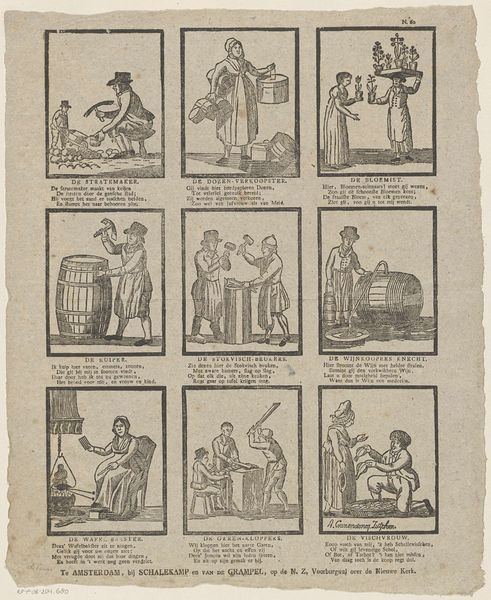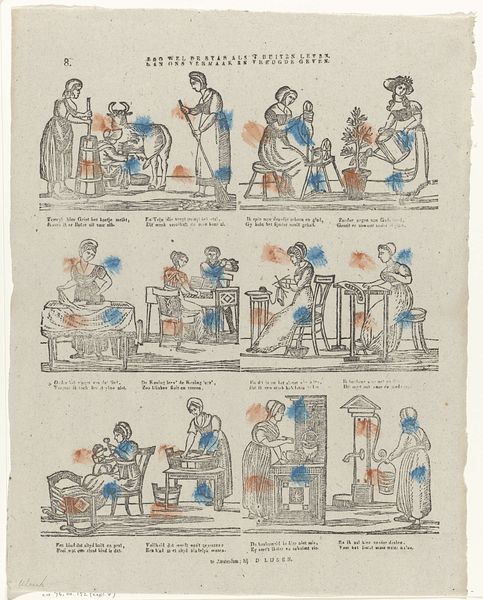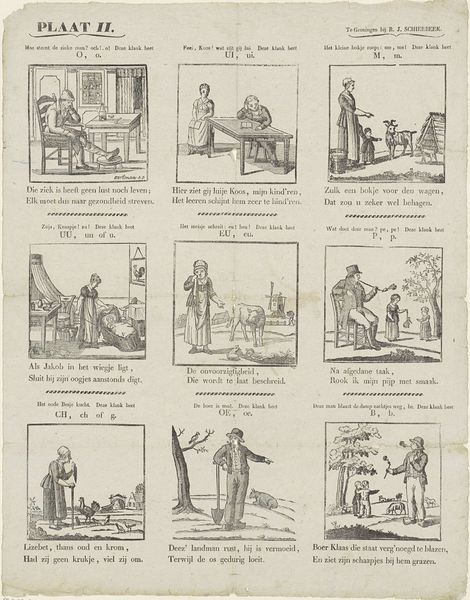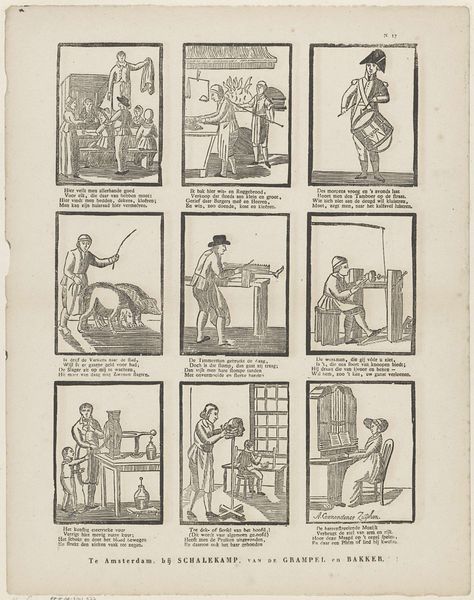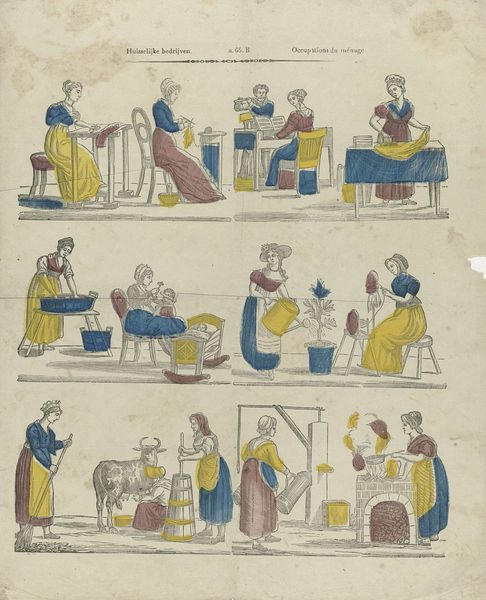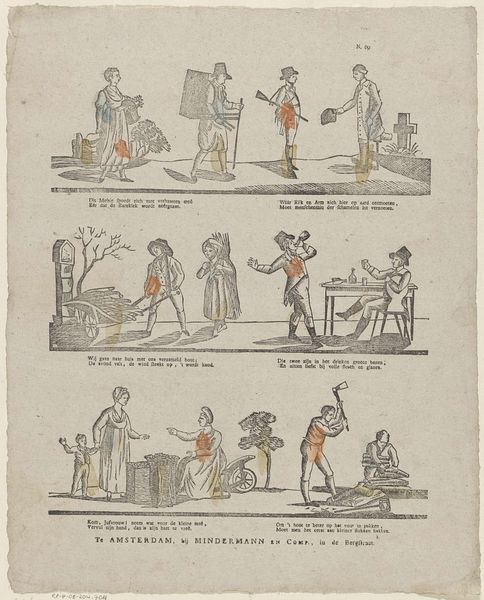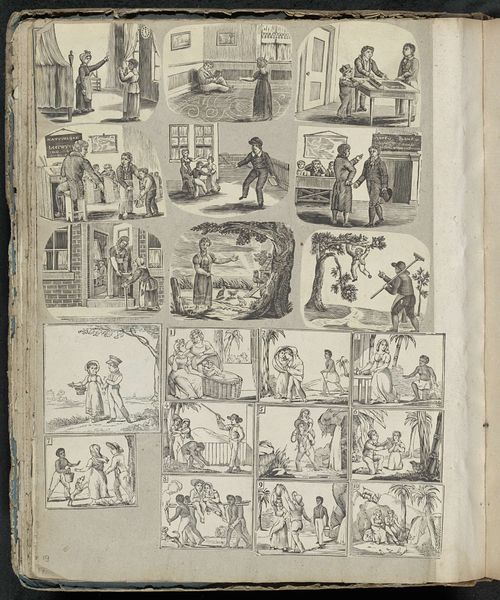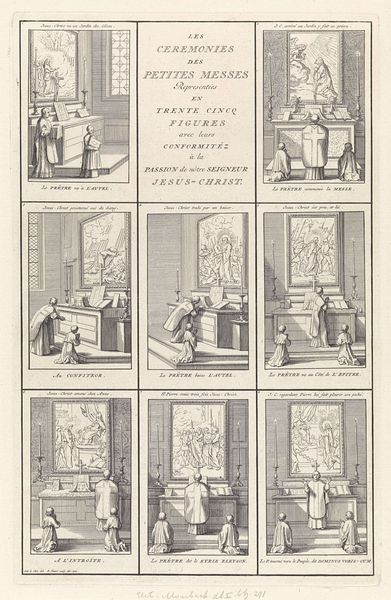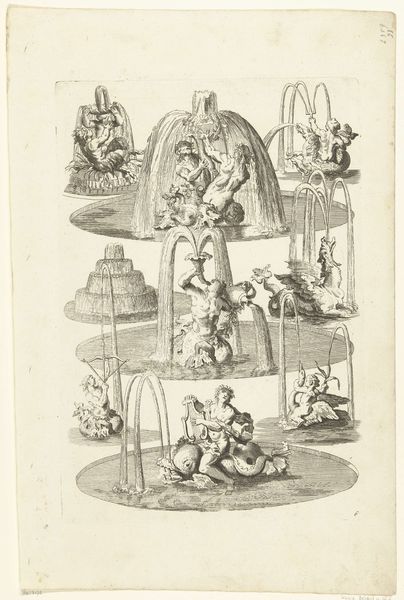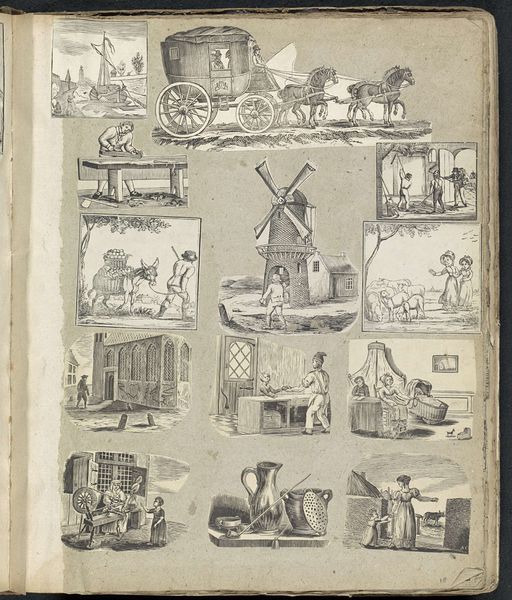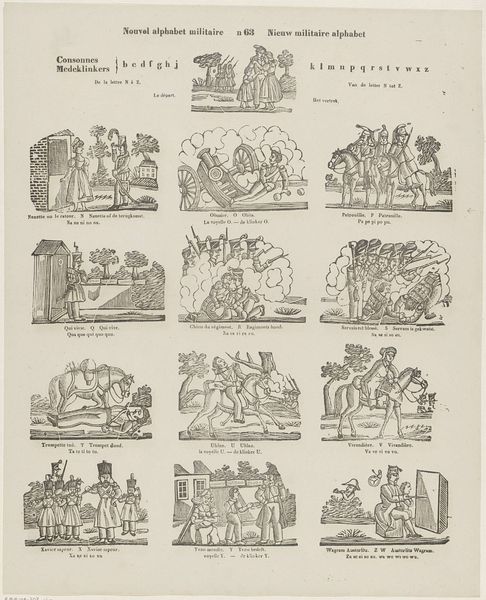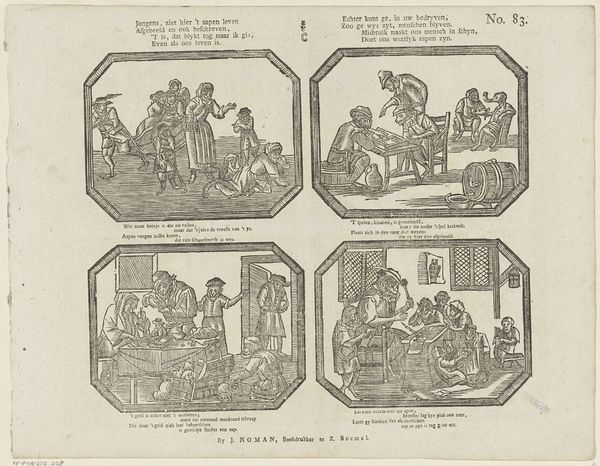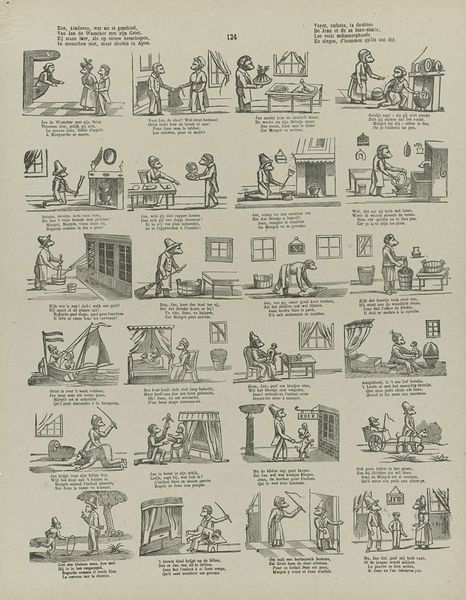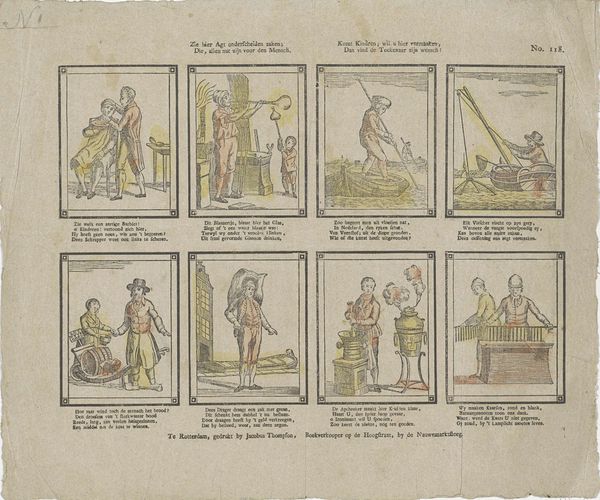
Groote muziek en zang van' beroemde muziekanten / Grande musique et chant des principaux musiciens 1833 - 1911
0:00
0:00
Dimensions: height 365 mm, width 315 mm
Copyright: Rijks Museum: Open Domain
Curator: This engraving, titled "Groote muziek en zang van' beroemde muziekanten / Grande musique et chant des principaux musiciens", part of the Rijksmuseum collection, dates from 1833 to 1911 and is attributed to Brepols & Dierckx zoon. It presents a grid of various domestic scenes. My initial thought is that this intends to depict and celebrate daily activities in the domestic lives of European women in that period. Editor: The initial feeling that washes over me is one of…constraint. There’s a clear visual structure but the uniformity of the scenes and subjects conveys a kind of stifling, ordered world, though ostensibly showing productivity. Curator: Exactly. The repetitive imagery reinforces the socially constructed roles for women in 19th-century society. Notice how each vignette displays a woman performing a specific, assigned task; lacemaking, nursing children, watering plants. All very domestic and contained within the home. It reveals much about societal expectations. Editor: And the deliberate composition invites us to analyze the deeper significance. A closer inspection indicates many persistent symbols. Consider the prominence of spinning and weaving. Isn’t that suggestive of an ordered life, with cycles of domesticity that define one's cultural place and duty? Curator: That is well observed, given that spinning and weaving represent female labour and industriousness and by extension the household order within European communities at that time. But consider, how might this image have functioned in contemporary culture? Prints such as these had enormous currency as didactic or instructional tools among burgeoning urban middle classes, promoting acceptable moral behaviour. Editor: Precisely. Though seemingly observational and banal, this image, laden with persistent signifiers and icons about women’s roles in society, creates a particular reading for the rising middle classes: women confined to domestic tasks only and devoid of self-fulfilment beyond what's expected. The cow even suggests a woman's role in nurture and the milk it provides, drawing a gendered parallel. Curator: So while, ostensibly a simple genre scene portraying women at work, the image becomes much more: a window into social mores and how certain social roles were consolidated and re-inscribed throughout generations in early European history. Editor: Agreed. The surface might appear simple but it’s actually a rich text filled with cultural codes, really reflective of larger gendered dynamics throughout that century.
Comments
No comments
Be the first to comment and join the conversation on the ultimate creative platform.
